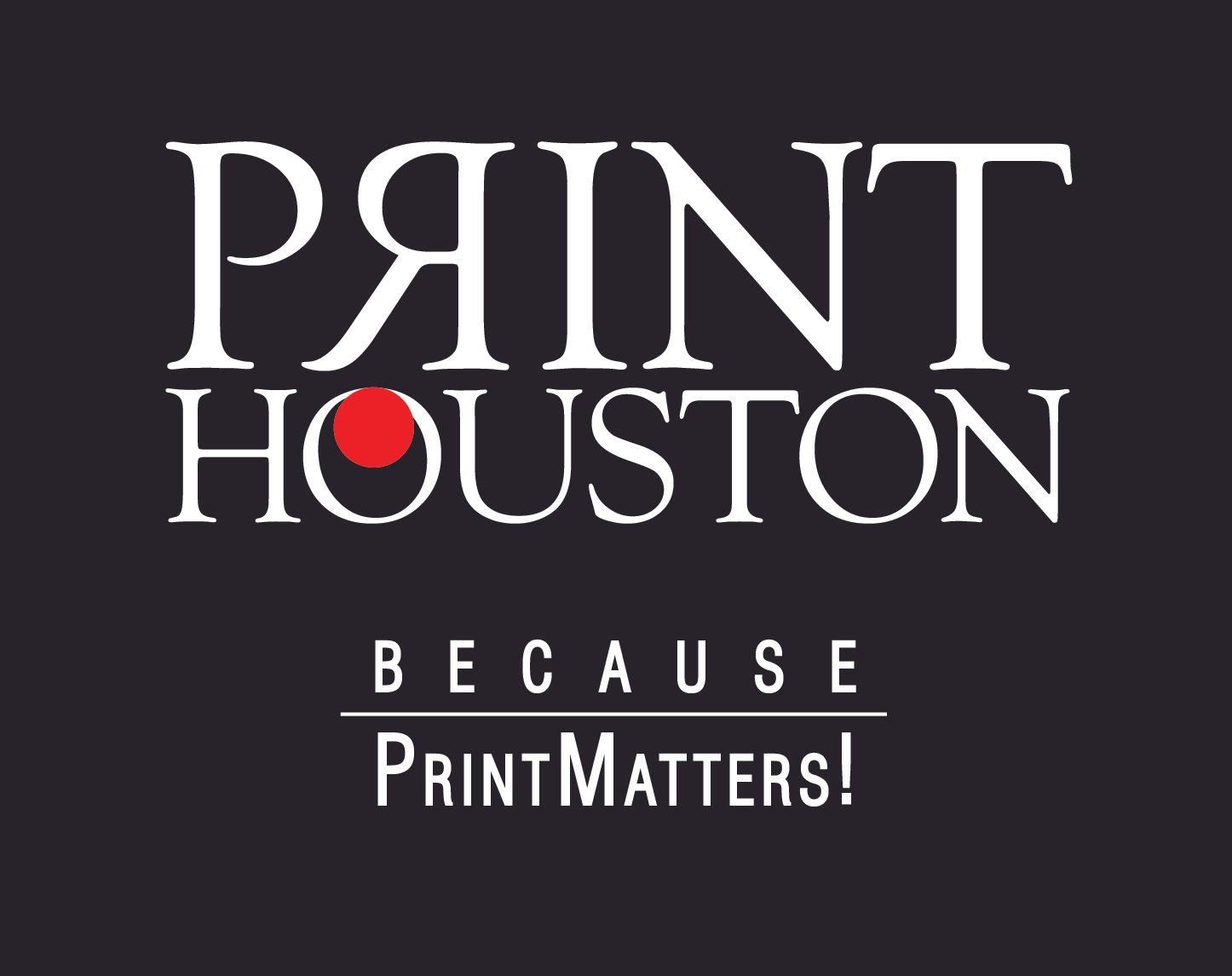PrintHouston: A biennial celebration of original prints, the artists who create them, and the people who collect them.
We invite you to join us in June 2026 in celebrating our Tenth PrintHouston!
We will kick-off the PRINTHOUSTON 2026 Biennial celebration with keynote speakers, Ayn Greinstein and Joni Weyl Felsen, owners of Gemini G.E.L., Friday, May 30th at Glassell School of Art Favrot Auditorium. About Gemini G.E.L.: https://www.geminigel.com/
On Saturday, May 31st Dr. Dena M. Woodall, curator, prints and drawings at MFAH, along with Ayn Greinstein and Joni Weyl Felsen, will discuss the Gemini G.E.L. exhibit in the MFAH, Kinder Building dedicated Prints and Drawings Gallery. A lecture/demo on printmaking will take place afterwards in the Print Studio at The Glassell School of Art.
Interested in hosting an exhibition during PrintHouston 2026?
PrintHouston 2026
Opening Reception
Friday, May 30, 6:30-8:00pm The Glassell School of Art
Keynote Speakers: Ayn Greinstein and Joni Weyl Felsen, owners of Gemini G.E.L.
Friday, May 30, 6:30-8pm The Glassell School of Art, Favrot Auditorium
About Gemini G.E.L.: https://www.geminigel.com/
Gallery Talk
Saturday, May 31, 12noon-1pm Prints and Drawings Gallery, 2nd Floor Kinder Building
Lecture/Demo
Saturday, May 31, 2-4pm Print Studio at The Glassell School of Art
Featured Guests & Jurors
2026 - Ayn Greinstein and Joni Weyl Felsen, owners of Gemini G.E.L. https://www.geminigel.com/
2024 — Larissa Goldston, Director of Universal Limited Art Editions (ULAE) https://www.ulae.com/
2022 — TAMARIND INSTITUTE’S Diana Gatson, Executive Director www.tamarind.unm.edu
2019 — James Surls, Artist
NEXT / PrintTX Jurors:
NEXT 2026 — Phil Sanders
NEXT 2024 — Ann Shafer
NEXT 2022 — Paola Morsiani
NEXT 2019 — Lyle W. Williams
NEXT 2017 — Nancy Palmeri
PrintTX 2015 — Karen Kunc
NEXT 2014 — Yizhak Elyashiv
PrintTX 2013 — Peter S. Briggs
NEXT 2012 — Dr. Dena M. Woodall
Scheduled Exhibitions
PULLED X2
To show the beauty and diversity of papermaking, papermakers are paired with printmakers to feature original prints made on handmade paper.
Downtown Library
June 1 - July 31, 2026
Opening: Saturday, June 6, 3-5pm (free parking for first hour)
NEXT 2026
National Juried Exhibition
Juror: Phil Sanders is a master printer, educator, author, artist, and arts business consultant. Founder and directer of PS Marlowe, a creative services consultancy firm and fine art publisher based in Asheville, NC.
Ellio Fine Art
Opening: Friday, June 19, 2026, 6-8pm
Juror's Talk June 20, 1:30-2:30pm
PrintHouston Calendars
ORIGINAL PRINTS: A BRIEF GUIDE
An original print is a work of art traditionally created by hand and printed by hand, either by an artist or a master printer. It is normally produced in a limited number of impressions. The term for this group of prints is edition.
Original prints are signed in pencil by the artist. They are numbered to indicate how many prints there are in the edition and to identify the individual print. This is called the edition number. 4/25 would indicate to the collector that this is number 4 out of an edition of 25. The artist may keep a separate group of prints aside from the edition marked as artist’s proofs. These are marked A/P, sometimes with an edition number after (A/P 2/5) to indicate how many artist proofs there are. During the course of developing the image an artist may pull many experimental images. These are referred to as state proofs, trial proofs, or color proofs. When the image is finally perfected the bon-a ́-tirer (signed B.a.T.) is pulled. This is the image to which the rest of the edition is matched. There is only one B.a.T. and the master printer, if there is one, keeps this print. Some prints are not editioned and are instead printed singularly - these may be labeled 1/1.
Many works are called limited edition prints or limited edition lithographs, but they are not original prints in the traditional sense of the term. They are usually reproductions of art created in another medium and are usually printed on a high-speed offset commercial press. A common form of reproductions called giclées are produced on high-end color printers. Unfortunately, many times these reproductions are signed and numbered by the artist, just like an original print. This practice has led to much confusion in the marketplace. The primary difference between these reproductions and original prints is that reproductions are copies of an artwork that was originally produced in a different medium, whereas original prints are created specifically to be appreciated in the print medium.
If you ever have a question about the authenticity of a print, ask if it is an original print and how it was produced.
Andis Applewhite, President, PrintHouston
We are very grateful for the support and enthusiasm of the Houston art community over the years! We hope you can join us in celebrating original prints throughout Houston.
If you are new to the event, please let us know how we may be of assistance.
PrintHouston@printmattershouston.org
Looking forward to PRINTHOUSTON 2024!
Andis Applewhite. President of PrintHouston



